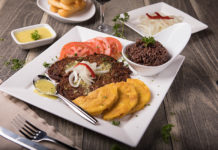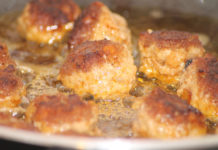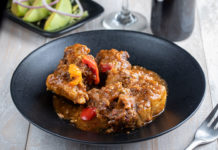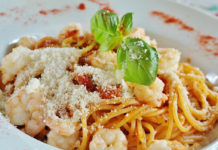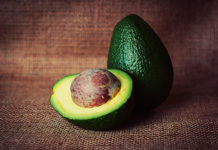Pizza
Do you know that Pizza Day is celebrated every February 9th? If it were up to us, it’d be the week we didn’t honor her, giving a good account of one. It is probably the most popular dish of Italian cuisine. This enriched variant of bread has its origins in 17th-century Naples, where it began to be made as we enjoy it today. However, you would have to wait until the late 19th century for cheese (our favorite ingredient) to be added.
A curiosity: If you go to Naples, you should know that the authentic pizza of this place has denomination of origin, the Traditional Specialty Guaranteed (Specialita Tradizionale Garantita, in Italian).
Grosso mode, there are two types of Italian pizzas: Neapolitan and Roman. The first is made with a more hydrated mass, so that the bark is fluffy and the dough is softer. The Roman is thinner and crispier (the dough contains less water) and is baked for longer.
Focaccias
Focaccia is very similar to pizza, but differs from pizza in that it is thicker and fluffy and does not usually carry tomato sauce. In fact, it is usual to serve with olive oil, salt and some aromatic herbs. Outside the transalpine country it is often used as bread to make sandwiches and sandwiches.
Spaghetti
This type of elongated and fine pasta is another culinary symbol of the transalpine country. Its name derives from the word spago (in Italian, cord). It appears that they were already consumed (at least one variant) in the 12th century. The most common thing was to serve them with olive oil, cheese and pepper; it wasn’t until the 18th century when they were incorporated tomato sauce.
There are many famous spaghetti recipes; among them we highlight the celebérrimos spaghetti with meatballs, to the putanesca (with a spicy touch, with olive oil, garlic, tomato, peperoncino and anchovies), carbonara (the original recipe does not carry cream) and spaghetti alle vongole, classics in the kitchen Neapolitan, prepared with a sofrito of garlic and olive oil, white wine and clams.
Lasagna
It is another Italian delicacy that supports a wide variety of recipes and variants. It seems that its origin is Greco-Latin, although the “modern” lasagna was not prepared as such until the seventeenth century.
The recipes depend a lot on the taste of the cook and the area of Italy. Perhaps the most famous is bolognese lasagna, with tomato sauce and ragu. Bechamel, a sauce made with a roux of wheat flour and milk, is common in lasagna. However, there are endless alternatives. Vegetable lasagna is now in vogue, replacing pasta sheets (as there was) with laminated vegetables such as zucchini or aubergine. Calorie saving is important, and it makes it a suitable dish for vegans.
Ravioli
There is no consensus when it comes to establishing the origins of this filled paste. For some scholars, they come from China (specifically, wonton pasta) and were brought to Italy by Marco Polo. For others, the raviologist is indigenous to the Mediterranean country. Either way, they are exquisite, and thanks to the massive migration of Italians, they have become hugely popular in countries such as Argentina, where they are a national dish, such as roasting.
The new kitchen also uses ravioli with profusion for its possibilities when it comes to using fillings of all kinds. Who hasn’t tried ravioli stuffed with braised bulltail, duck or even sweet options?
Onocchi or gnocchi
This fresh Italian pasta is made with potato, although there are many variants in which you can use breadcrumbs, cornmeal or pumpkin and, in Latin American countries, it is not uncommon to use cassava, banana or cassava.
The traditional Italian recipe uses potato, flour, butter and eggs in the form of a compact puree. Parts that are slit with the fork are cut. Plenty of boiling water are cooked; when the gnocchi are ready they come to the surface of the pot. They are usually eaten with tomato sauce, sage or gorgonzola cheese, although as with pastas, the possibilities are enormous and the chef’s imagination will mark the recipe.
In some countries of the Latin American Southern Cone it is common to eat gnocchi on the 29th of each month. Apparently, this custom is that people with fewer resources, at the end of the month, had few ingredients in their pantry and this recipe was out of many predicaments. Other sources point to the legend of Saint Pantaleon. This young doctor prophesied to some Veneto peasants who would have a year of excellent harvests. The episode would occur on July 29, and the habit of remembering that moment was supposed to be established with this humble bite.
Risottos
Risotto is a very famous dish in Italy, especially in the northern part of the country (Piamonte, Lombardy and Verona), which is where this cereal is grown most. They are usually complemented with parmesan, although their creaminess and flavor have made the dish famous all over the world. And with it, the experimentation around this recipe has been total.
Mushrooms, cheeses, spinach and seafood are among the most common raw materials with which they are made. To achieve an optimal result it is important to use rice that release a lot of starch, which guarantees classic pastosity. The most popular varieties are arborio, carnaroli and maratelli; they’re expensive, but it’s a worthwhile investment.
Vitello tonnato
The “atunada” veal is a very popular dish of Piedmont origin. Beef is used and served with a sauce based on tuna, cream and egg, the flavor of which can be made even more intense with anchovies and capers. It is also widely consumed in Argentina, where there is a large community of Italian roots.
Tiramisu
This popular dessert is a symbol of Italian pastries, but its origins are recent, approximately in the sixties of the last century. Scholars place their originin sits in Treviso, a village in the Veneto region. Some point out that it was in the alle Beccherie restaurant in the municipality. The chef, Roberto “Loly” Linguanotto, was trying to recreate a variant of the Inglese zuppa (another dessert known in the country) and other sweets that he had seen abroad. His recipe quickly became popular.
Others point to the birth of tiramisu in the same village, but in the Al Camín restaurant. There, in the mid-1950s, cook Speranza Bon supposedly made a “coppa imperiale” made with the typical ingredients of tiramisu.
In any case, it is a world-famous recipe thanks to its creaminess and the possibilities of adapting the recipe. The biscuits that make up the main body of the dessert can be of many kinds (soletilla cakes, Italian savoiardi, Genoese cake…), as well as cheese. It’s usual to use mascarpone next to the beaten whites at the point of nine, but a similarly textured cheese works well. Coffee and liquor are used, although there are very unorthodox but exquisite modern variants, such as fruit, chocolate, etc.
Panna cotta
This Piedmont dessert is a real delight if you like dairy and creamy sweets. It literally means “cooked cream” and carries cream, milk, sugar and fishtail or other similar gelling. It is common to accompany it with red fruits, chocolate or caramel. It is a recipe of early Italian Novecento with great diffusion.


